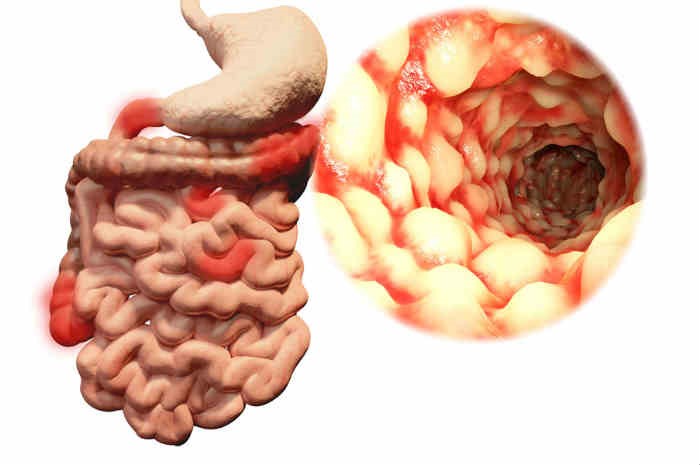
Why KRAS testing
The KRAS test (human homologue of the Kirsten Rat sarcoma 2 viral oncogene) is the first genetic test to identify the characteristics of an important biomarker of colorectal cancer, the KRAS protein
In tumour cells, this protein is an indispensable mediator of stimuli that promote tumour development, helping to activate cell proliferation, promote the growth of blood vessels that ‘feed’ the tumour (angiogenesis) and reduce programmed cell death of the tumour cell (apoptosis).
Consequently, the analysis of the functional properties of this protein by means of the test allows the use of specific biological drugs capable of blocking its activity and thus controlling tumour development.
In tumours, the gene that ‘governs’ the synthesis of the KRAS protein (the KRAS gene), can be ‘normal’ (KRAS wild-type), or mutated, i.e. with a partly different structure.
If the gene is normal, the KRAS protein produced is perfectly functional and its activity is finely regulated by a complex series of biochemical reactions.
If, on the other hand, the gene is mutated, it gives rise to an ‘abnormal’ KRAS protein that is always active and can no longer be regulated.
What the KRAS test looks for
The KRAS test is used to identify the type of the KRAS gene and, therefore, the status or form of the KRAS protein in colorectal cancer, whether normal (also called ‘wild type’) or ‘non-normal’ (mutated).
This determination is essential precisely because the status of the KRAS protein can influence the prognosis of the disease and the response to those treatments aimed at its inactivation: tumours that present the normal KRAS protein, the vast majority of cases, can be effectively treated with drugs that block its activity, while if the KRAS protein is mutated the oncologist will choose the most appropriate treatment, capable of ensuring maximum benefit.
What the KRAS test identifies
The KRAS test, which has been available since 2007, is a simple, precise and non-invasive test: in most cases, it can be easily performed on already available tumour tissue, e.g. that derived from tumour biopsy, and its results are available within a short time, about a week.
The KRAS gene test therefore analyses the DNA of tumour cells already available from tissue samples already taken by biopsy and other analyses.
The presence of a mutated KRAS gene in tumour cells is detected by a very sensitive and specific method, quantitative PCR (qPCR), which allows the DNA of the KRAS gene to be selectively amplified.
This test is carried out by doctors and biologists in the analysis laboratories of many healthcare facilities.
Read Also
Emergency Live Even More…Live: Download The New Free App Of Your Newspaper For IOS And Android
What Is Digital Mammography And What Advantages It Has
Soft Tissue Sarcomas: Malignant Fibrous Histiocytoma
Brain Tumours: Symptoms, Classification, Diagnosis And Treatment
Pediatric Brain Tumors: Types, Causes, Diagnosis And Treatment
Brain Tumours: CAR-T Offers New Hope For Treating Inoperable Gliomas
Lymphoma: 10 Alarm Bells Not To Be Underestimated
Chemotherapy: What It Is And When It Is Performed
CAR-T: An Innovative Therapy For Lymphomas
What Is CAR-T And How Does CAR-T Work?
Radiotherapy: What It Is Used For And What The Effects Are
Craniosynostosis Surgery: Overview
Pediatric Malignancies: Medulloblastoma
Soft Tissue Tumours: Leiomyosarcoma
What Is Needle Aspiration (Or Needle Biopsy Or Biopsy)?
Positron Emission Tomography (PET): What It Is, How It Works And What It Is Used For
CT, MRI And PET Scans: What Are They For?
MRI, Magnetic Resonance Imaging Of The Heart: What Is It And Why Is It Important?
Urethrocistoscopy: What It Is And How Transurethral Cystoscopy Is Performed
What Is Echocolordoppler Of The Supra-Aortic Trunks (Carotids)?
Surgery: Neuronavigation And Monitoring Of Brain Function
Robotic Surgery: Benefits And Risks
Refractive Surgery: What Is It For, How Is It Performed And What To Do?
Single Photon Emission Computed Tomography (SPECT): What It Is And When To Perform It
What Is An ECG And When To Do An Electrocardiogram
MRI, Magnetic Resonance Imaging Of The Heart: What Is It And Why Is It Important?
Mammary MRI: What It Is And When It Is Done
Mammography: How To Do It And When To Do It
Pap Test: What Is It And When To Do It?
Colorectal Cancer: The Advantages And Performance Of The KRAS Test



